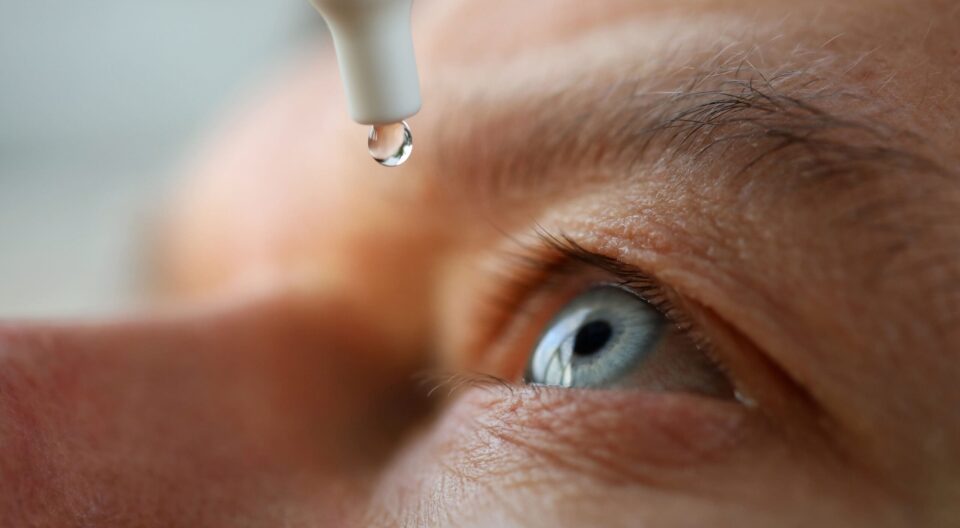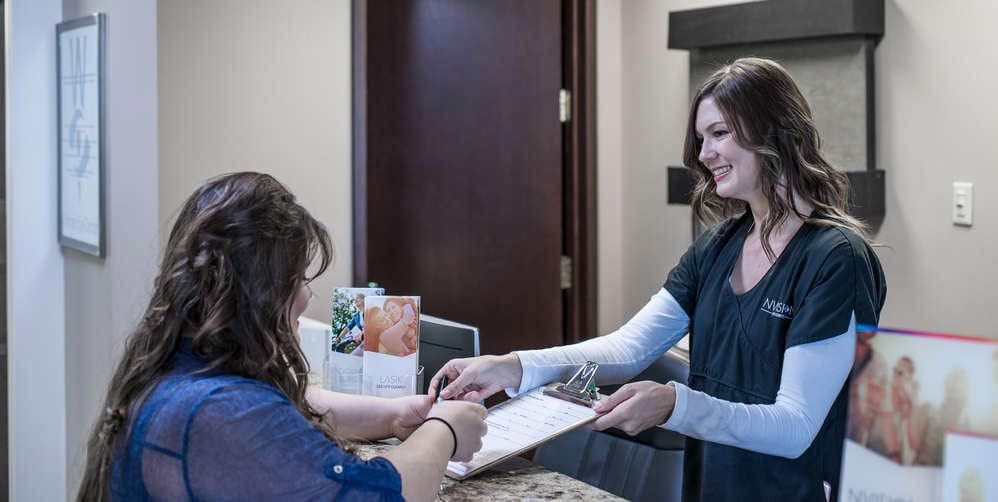
Conditions
Dry Eye
What Is Dry Eye?
One of the most common eye conditions treated by physicians, Dry Eye is an irritating and sometimes painful condition in which the eye fails to properly produce enough good quality tears. Your eyes may feel irritated—gritty, burning, stinging, or itchy. Other symptoms include eye fatigue, especially when reading or working on your computer as well as fluctuating vision. If left untreated, it can lead to ulcers, scars on the cornea, and even impairment of vision.
Common Questions About Dry Eye
Who is at risk for dry eye?
People who suffer from dry eye often include those who:
- Wear contact lenses, especially for prolonged periods of time
- Are taking medications such as antihistamines or birth control pills
- Are over 50, especially women going through menopause
- Have specific diseases such as Sjogren’s Syndrome, rheumatoid arthritis, Lupus, and other collagen vascular diseases
- Have eyelids that don’t close properly due to structural abnormalities
- Live in dry climates
What are some tips for Dry Eye Management?
- Stay Hydrated: Drink plenty of water to maintain overall hydration, as dehydration can contribute to dry eyes. Aim for at least eight glasses of water a day, and consider using a humidifier in dry indoor environments to add moisture to the air.
- Blink Regularly: Be mindful of blinking when using digital screens or reading for extended periods. Blinking helps distribute a fresh layer of tears across the surface of your eyes.
- Use Artificial Tears: Over-the-counter lubricating eye drops (artificial tears) can provide temporary relief from dry eye symptoms. Keep them on hand and use as needed, following your eye doctor’s recommendations.
- Avoid Airflow: Protect your eyes from direct airflow, whether from air conditioning, fans, or strong winds outdoors. Wear sunglasses on windy days to shield your eyes.
- Take Breaks from Screens: Follow the 20-20-20 rule when working on digital screens. Every 20 minutes, take a 20-second break to look at something 20 feet away to reduce eye strain.
- Limit Screen Time: Reduce excessive screen time, especially before bedtime, as prolonged exposure to screens can worsen dry eye symptoms.
- Proper Eyewear: If you have dry eyes and wear contact lenses, discuss your lens choice with your eye doctor. Some types of contact lenses may exacerbate dryness.
- Omega-3 Fatty Acids: Consider adding foods rich in omega-3 fatty acids, such as fish, flaxseed, and walnuts, to your diet or taking supplements. Omega-3s have anti-inflammatory properties that may benefit dry eye sufferers.
When Should I See an Eye Doctor?
- Persistent Symptoms: If you experience persistent dry eye symptoms, such as redness, itching, burning, or blurred vision, despite using artificial tears or implementing lifestyle changes, it’s time to schedule an appointment with an eye doctor.
- Severe Discomfort: If your dry eye symptoms are causing severe discomfort or interfering with your daily activities, it’s crucial to seek professional care promptly.
- Light Sensitivity: Increased sensitivity to light (photophobia) can be a sign of underlying eye issues, including dry eye, and should prompt a visit to the eye doctor.
- Vision Changes: Any sudden or significant changes in your vision, especially if accompanied by dry eye symptoms, should be evaluated by an eye care specialist.
- Chronic Conditions: If you have underlying medical conditions such as Sjögren’s syndrome or rheumatoid arthritis that are associated with dry eye, regular eye exams are essential to monitor and manage your eye health.
- Medication Side Effects: Inform your eye doctor if you’re taking medications known to cause or exacerbate dry eye symptoms. They can discuss potential alternatives or additional treatments.
Remember that early detection and appropriate management are key to effectively addressing dry eye syndrome. An NVISION eye doctor can diagnose the severity of your condition, recommend tailored treatments, and provide guidance on lifestyle changes to help improve your eye comfort and quality of life.
What can be done for my dry eyes at NVISION?
In addition to the use of very sophisticated diagnostic tests such as Lipiview, tear osmolarity, HD Analyzer for tear film stability testing, MMP levels, we use specialized artificial tears and a variety of other treatments such as Lipiflow, BlephEx, punctal occlusion, amniotic membrane placement, Regener-Eyes, Serum Tears, Warm Compresses, as well as many other new procedures and specialized eye drops and treatments. Please make an appointment with one of our doctors who specialize in dry eye therapy.
Why Choose NVISION for Eye Care Needs?
Our Experience
Our board-certified surgeons are the most experienced, educated and caring professionals in the eye care industry. Our surgeons have performed over 2,500,000 procedures. More eye doctors have had their surgery performed by an NVISION surgeon than any other provider of eye care.
Patient Care
Every NVISION patient is different, and therefore, we strive to personalize their treatment based on their unique needs. We treat every patient with care, compassion, empathy and professionalism with a promise to deliver the best-in-class patient care.
Technology
We utilize only the most advanced laser and diagnostic equipment available to ensure we can deliver the best outcomes for our patients.

Unparalleled Commitment
Exceptional outcomes. The gold standard in patient care. The #1 Choice of Eye Doctors®. The Vision For Life promise. That’s what makes the NVISION® experience like no other.

Take the Next Step to Clear Vision Today
For over 25 years, NVISION has been the trusted choice in custom vision correction. With 135+ locations nationwide and over 2.5 million procedures performed, our board-certified surgeons combine expertise with the latest technology to deliver exceptional care.
Your journey to better vision starts here.

Book Your Consultation
You're one step closer to life without glasses or contacts. Just answer a few quick questions about your eye exam, and we'll lock in your appointment.
Have a question? Give our experts a call!
877-455-9942